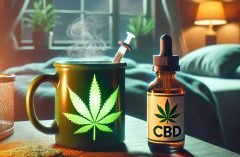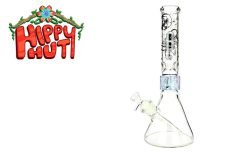Table of Contents
 The 1960s and 70s: A Glimpse into the Past
The 1960s and 70s: A Glimpse into the Past
In the late 1960s and early 1970s, marijuana was a staple of the counterculture movement among Baby Boomers. Known for its psychoactive effects, marijuana was commonly referred to as “weed,” “pot,” “grass,” and “Mary Jane.” During this time, the cost of marijuana varied significantly based on location and quality. On average, an ounce of marijuana, often called a “lid,” could cost between $10 to $20.
Cost and Strength: Then and Now
Today, the landscape of marijuana use has changed dramatically, particularly with the legalization of medical and recreational marijuana in various states. Modern dispensaries offer a wide range of cannabis products, with prices reflecting quality and potency. An ounce of marijuana in a legal market can range from $150 to $300, depending on the strain and dispensary.
One of the most significant changes is the potency of the marijuana itself. In the 60s and 70s, the average THC (tetrahydrocannabinol) content in marijuana was around 1-3%. Today, due to advanced breeding techniques and better-growing conditions, THC levels in some strains can reach up to 30%. This increase in potency has fundamentally changed the marijuana experience.
Alteration and Risks in the Past
 Historically, the landscape of marijuana distribution was fraught with significant dangers and uncertainties. Illegal marijuana dealers, operating outside the bounds of regulation, often resorted to dubious practices in an attempt to enhance the potency of their products.
Historically, the landscape of marijuana distribution was fraught with significant dangers and uncertainties. Illegal marijuana dealers, operating outside the bounds of regulation, often resorted to dubious practices in an attempt to enhance the potency of their products.
One particularly alarming method involved lacing marijuana with other potent substances, such as PCP or phencyclidine. This drug, known for its hallucinogenic and dissociative effects, could dramatically alter the experience of consuming marijuana, leading to unpredictable and potentially harmful outcomes for users.
The addition of PCP and similar substances not only intensified the effects of marijuana but also drastically increased the health risks associated with its consumption. Users could easily find themselves experiencing severe psychological reactions, including paranoia, anxiety, and hallucinations, which were exacerbated by the combination of drugs. Such dangerous modifications contributed to the growing stigma surrounding marijuana use, painting it as a perilous endeavor fraught with unforeseen consequences. These practices heavily influenced the public perception of marijuana, leading many to associate its use with recklessness and addiction.
In stark contrast, today’s landscape is markedly different, thanks to the emergence of regulated dispensaries. These establishments operate under strict legal guidelines and oversight, ensuring quality and safety previously unattainable. Consumers can now access marijuana products that have been rigorously lab-tested for purity and potency. This means that users can feel confident that their products are free from harmful additives and other dangerous substances that were once common in the illicit market.
Moreover, marijuana regulation has not only enhanced consumer safety but also fostered a more informed public. Dispensaries are often staffed by knowledgeable professionals who can guide the available strains, their effects, and the safest consumption methods. This education is vital for consumers, helping them make informed decisions about their use and understand the potential risks involved, all while enjoying a product that has been carefully cultivated and tested.
In summary, while the past was marred by the risky practices of illegal dealers who altered marijuana to amplify its effects, the current landscape of regulated dispensaries marks a significant advancement in consumer safety and product integrity. With lab-tested marijuana now widely available, users can enjoy their experience without the fear of harmful additives, leading to a more positive perception of marijuana overall.
Terminology and Attitudes
The terminology used by Baby Boomers has evolved, but some terms like “stoned” and “high” remain in use. However, today’s legal market also includes a more scientific approach, with labels indicating THC and THCA (tetrahydrocannabinolic acid) content. THCA is a non-psychoactive compound that converts to THC when heated. This labeling helps consumers make informed decisions based on their desired effects.
The text discusses the importance of labeling cannabis products with information about their THC (tetrahydrocannabinol) and THCA (tetrahydrocannabinolic acid) content. For a non-expert cannabis user, understanding these terms can enhance your experience and help you choose the right product for your needs.
THC and THCA Explained
 THC is the compound in cannabis that is primarily responsible for the psychoactive effects, meaning it’s what gets you “high.” This is often what most users are looking for when consuming cannabis for recreational purposes.
THC is the compound in cannabis that is primarily responsible for the psychoactive effects, meaning it’s what gets you “high.” This is often what most users are looking for when consuming cannabis for recreational purposes.
THCA, on the other hand, is the precursor to THC. It is found in raw cannabis and is non-psychoactive, meaning it won’t produce the same high that THC does. When cannabis is heated—through smoking, vaping, or cooking—the THCA transforms into THC through a process called decarboxylation. This means that if you consume cannabis in its raw form (like in a salad or juice), you won’t experience the psychoactive effects associated with THC.
The labeling that indicates both THC and THCA content is crucial for consumers. It allows you to understand what you can expect from a product. For instance, if a product has high THCA and low THC, it might be better suited for someone who wants the potential health benefits of cannabis without the high. Conversely, if you’re looking for recreational effects, you might seek out products with higher THC content.
In summary, understanding the difference between THC and THCA, along with the importance of product labeling, empowers you as a consumer to make informed choices that align with your desired effects, be they therapeutic or recreational.
The requirements for cannabis labeling, including whether to list THC and THCA amounts, vary by state in the United States. Most states with legal cannabis markets require labeling to include THC content, and many also require the listing of THCA.
Consumption Patterns: Then and Now
 In the 60s and 70s, marijuana was often consumed in social settings, rolled into joints, or smoked through pipes and bongs. The consumption amount varied, but it was common for individuals to share a joint or pipe during gatherings. Today, while traditional methods of smoking remain popular, there is a wide variety of consumption methods, including edibles, tinctures, and vaporizers. The legal market also offers precise dosing information, allowing users to control their intake more effectively.
In the 60s and 70s, marijuana was often consumed in social settings, rolled into joints, or smoked through pipes and bongs. The consumption amount varied, but it was common for individuals to share a joint or pipe during gatherings. Today, while traditional methods of smoking remain popular, there is a wide variety of consumption methods, including edibles, tinctures, and vaporizers. The legal market also offers precise dosing information, allowing users to control their intake more effectively.
Societal Views and Legalization
Societal views on marijuana have shifted significantly over the past 50+ years. During the Baby Boomer era, marijuana use was widely stigmatized and associated with counterculture movements. Today, the legalization of marijuana for medical and recreational use in many states reflects a broader acceptance of its benefits and a shift away from punitive approaches.
As of 2024, many states have legalized recreational marijuana use, while others permit medical marijuana. States like California, Colorado, and Oregon allow both recreational and medical use, while states such as Florida and New York have comprehensive medical marijuana programs. Obtaining a medical marijuana license typically involves getting a recommendation from a certified physician and registering with the state’s medical marijuana program.
Differences in the Marijuana High: 1960s/70s vs. Today
The experience of a marijuana high has changed significantly from the 1960s and 70s to the present day, mainly due to differences in potency, cultivation practices, and consumption methods.
Potency
1960s/70s:
- THC Levels: Marijuana in the 1960s and 70s had much lower THC (tetrahydrocannabinol) levels, typically ranging from 1-3% . This lower potency resulted in a milder, less intense, and manageable high.
- Effects: The high was often described as mellow and relaxing, with mild euphoria and enhanced sensory perceptions. The lower THC content meant that the psychoactive effects were less overwhelming, making it easier for users to maintain social interactions and engage in creative activities.
Today:
- THC Levels: Modern marijuana strains have been bred to contain much higher THC levels, often exceeding 20% and sometimes reaching up to 30%. This significant increase in potency leads to a much stronger and more intense high.
- Effects: The high from today’s marijuana can be much more potent, leading to stronger euphoria, altered perception of time and space, and more pronounced psychoactive effects. For some users, the high can be overwhelming, potentially leading to anxiety or paranoia, especially for inexperienced users or those with lower tolerance.
Cultivation Practices: Then and Now
1960s/70s:
- Quality Control: Marijuana was often grown and distributed illegally, resulting in inconsistent quality and potency. There was little to no quality control, and marijuana was sometimes laced with other substances like PCP to enhance its effects, posing additional health risks .
- Varieties: The strains available were limited, and users had less control over the specific effects they sought.
Today:
- Quality Control: Legalization in many states has led to regulated markets where marijuana is lab-tested for potency, purity, and contaminants. This ensures that users know exactly what they are consuming and can choose products based on their desired effects.
- Varieties: There is a wide variety of strains available today, each bred for specific effects, such as relaxation, creativity, or pain relief. Dispensaries provide detailed information about the cannabinoid and terpene profiles of each strain, allowing users to select products tailored to their needs.
Consumption Methods: Then and Now
1960s/70s:
- Traditional Methods: The most common methods of consumption were smoking joints, pipes, or bongs. Edibles were less common and typically homemade, leading to unpredictable dosing.
- Social Context: Marijuana use was often a communal activity, with joints being passed around in social settings. The lower potency made it easier for users to consume larger quantities without experiencing adverse effects.
Today:
- Modern Methods: In addition to traditional smoking methods, users now have access to a variety of consumption methods, including vaporizers, edibles, tinctures, topicals, and concentrates. These methods allow for more precise dosing and different experiences.
- Personalized Consumption: Edibles, oils, and vaporizers are available, so users can choose methods that best suit their preferences and lifestyles. Edibles and tinctures provide a smoke-free option, while vaporizers offer a less harsh alternative to smoking.
Are Baby Boomers Still Using Marijuana?
Baby Boomers are still using marijuana, and their usage is actually on the rise. Several studies have highlighted the increasing prevalence of cannabis use among older adults, particularly those born between 1946 and 1964.
Prevalence of Use

Recent research shows that nearly 1 in 10 Baby Boomers (ages 50-64) have used marijuana in the past year, a significant increase from previous years. Among those aged 65 and older, about 3% reported using marijuana in the same period. These figures represent a substantial rise from a decade ago when usage rates were much lower.
The increase in marijuana use among Baby Boomers can be attributed to several factors. Firstly, changing societal attitudes towards marijuana have led to greater acceptance and normalization of its use. As legalization efforts gain momentum across various states, older adults are more likely to explore marijuana for both recreational and medicinal purposes.
Additionally, many Baby Boomers are seeking alternatives for managing chronic pain, anxiety, and other age-related health issues. With increasing awareness of marijuana’s potential therapeutic benefits, more individuals in this demographic are turning to it as a viable option for relief.
Furthermore, the stigma surrounding marijuana use has diminished over the years, allowing Baby Boomers to feel more comfortable experimenting with it. This shift in perception, combined with the growing availability of marijuana products, has contributed to the significant rise in usage rates among this age group over the last decade.
Marijuana Use Among the Living Generations
Among the generations, Millennials (born 1981-1996) have the highest rates of marijuana use as of 2021 (latest data available). Studies and surveys indicate that this generation is leading in both past-year and past-month marijuana consumption.
In 2021, 43% of young adults aged 19 to 30 reported using marijuana in the past year, with daily use reported by 11% of this group. This reflects a significant increase over the past decade.
Generation X (born 1965-1980) also uses marijuana. Still, at lower rates than Millennials and Gen Z. Their usage has increased over time, but they do not surpass the younger generations in frequency.
Generation Z (born 1997-2012), while also showing substantial usage rates, tends to use marijuana slightly less frequently than Millennials. However, their preferences are shifting more towards marijuana over alcohol, particularly among those aged 18 to 24.
In summary, Millennials currently have the highest rates of marijuana use, followed by Generation Z, with Generation X and Baby Boomers using marijuana less frequently but still significantly.
Social and Legal Factors Facing Baby Boomers
The increased acceptance and legalization of marijuana in many states have contributed to this trend. Legalization has made cannabis more accessible and safer, as products are now regulated and tested for quality and potency. This legal shift also helps reduce the stigma associated with marijuana use, encouraging more older adults to explore its benefits.
Health and Wellness for Baby Boomers
Apart from recreational use, the medical benefits of cannabis are a significant draw. Many Baby Boomers are finding relief from symptoms that traditional medications have failed to address adequately. The availability of different consumption methods, such as edibles, tinctures, and topicals, also provides alternatives to smoking, which is a consideration for health-conscious seniors.
In summary, marijuana use among Baby Boomers is indeed increasing, driven by both medical needs and recreational interests. The changing legal landscape and growing acceptance of cannabis as a legitimate treatment option have played crucial roles in this shift.
The Future of Marijuana Legalization
The attitude toward cannabis continues to evolve, with expectations that marijuana will soon be legal in all 50 states. This change will allow marijuana dispensaries to use banking systems legally and potentially advertise their products, further integrating cannabis into mainstream society.
Conclusion
The evolution of marijuana from the 1960s and 70s to today highlights significant changes in cost, potency, societal views, and consumption methods. Baby Boomers, who once used marijuana in secretive and risky environments, can now legally access safe and potent cannabis for both recreational and medical purposes.
As legalization expands, the future of marijuana use in the United States promises to be more accepted and regulated, reflecting a society that recognizes both the recreational and therapeutic benefits of cannabis.



 The 1960s and 70s: A Glimpse into the Past
The 1960s and 70s: A Glimpse into the Past

